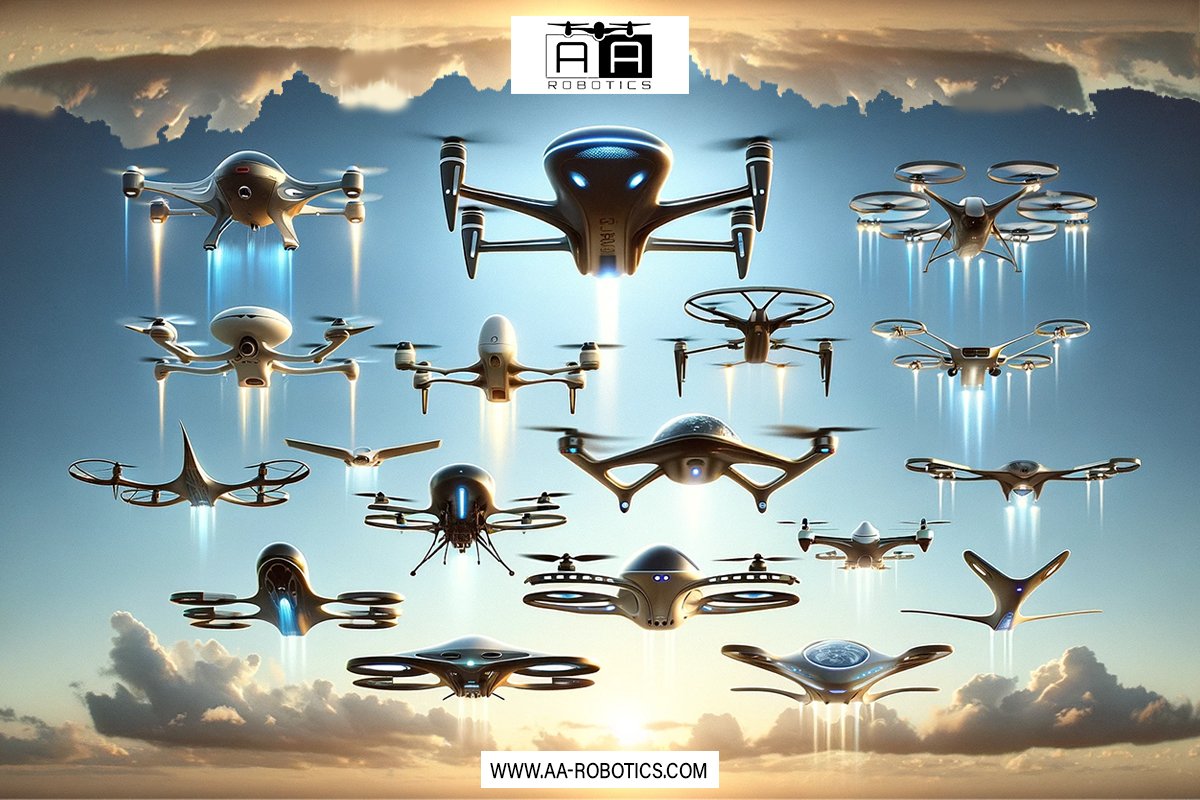
#1 Best AAs UAV Drones Guide To Conquer New Skies
Introduction To UAV Drones
Defining UAV Drones – An Overview Of UAVs And Their Significance In Modern Aviation
Unmanned Aerial Vehicles (UAVs), commonly known as UAV Drones, have revolutionized the aviation industry. They offer a versatile range of applications, from military operations to commercial and civilian uses. UAVs are remotely piloted or autonomously operated, making them essential for tasks where human safety is a concern. Their significance lies in their ability to access remote or dangerous areas, providing valuable data and insight.
Evolution Of UAV Technology
Historical Perspective On The Development Of UAVs
The history of UAVs dates back to the early 20th century, initially for military reconnaissance. Over the years, technological advancements have transformed UAVs into sophisticated systems. The development of UAVs mirrors the evolution of aviation technology, with significant milestones in propulsion, navigation, and control systems. This evolution reflects the growing importance of UAVs in various sectors.
Types Of UAVs
Categorizing UAVs Based On Their Characteristics And Applications
UAV Drones are diverse, ranging from small consumer drones to large military-grade UAV Drones. They can be categorized based on size, range, altitude, and functionality. This classification helps in understanding the broad spectrum of UAV applications and their specific roles in different fields such as agriculture, surveillance, and environmental monitoring.
UAV Drones Components And Technology
UAV Drones Anatomy-Detailed Breakdown Of The Essential Components Of A UAV
A UAV consists of several key components: the airframe, propulsion system, navigation system, control system, and payload. The airframe supports the entire structure, while the propulsion system determines the UAV’s range and speed. Navigation and control systems are crucial for UAV operations, ensuring accurate and reliable flight paths. Payloads, such as cameras and sensors, define the UAV’s application.
UAV Propulsion Systems
Examining Different Propulsion Methods, Including Electric, Gasoline, And Jet Engines
UAV Drones propulsion varies greatly, from electric motors in small drones to gasoline and jet engines in larger models. Each propulsion type offers distinct advantages. Electric motors are quiet and efficient, ideal for smaller UAVs, while gasoline and jet engines provide the power and endurance needed for larger, high-altitude UAVs.
Sensor And Payload Technology
The Role Of Sensors And Payloads In UAVs, Such As Cameras, LiDAR, And Multispectral Sensors
Sensors and payloads are the functional heart of UAVs. Cameras enable surveillance and imaging, LiDAR provides topographical data, and multispectral sensors are used in agricultural and environmental applications. The advancement in sensor technology has expanded the capabilities of UAVs, making them more versatile and effective.
Communication Systems
Discussion On Communication Technology Used In UAVs For Data Transmission And Remote Control
UAV communication systems are critical for data transmission and control. These systems range from simple radio frequencies to complex satellite communications, enabling UAVs to operate beyond visual lines of sight. The reliability and security of these systems are paramount, especially in military and commercial applications.
UAV Drones Applications
How UAVs Are Utilized In Defense, Surveillance, And Combat Scenarios
In the military sector, UAVs play a crucial role in reconnaissance, target acquisition, and combat missions. They provide a tactical advantage, offering high-resolution imagery and real-time data without risking human lives. UAVs have become integral in modern warfare, reshaping military strategies and operations.
Commercial And Civilian Uses
Exploring The Applications Of UAVs In Agriculture, Search And Rescue, And More
In the commercial and civilian realm, UAVs are used in various ways, from agricultural monitoring and crop spraying to search and rescue operations. They provide efficient, cost-effective solutions for tasks that are time-consuming or risky for humans. The versatility of UAVs is a significant factor in their growing adoption in commercial sectors.
Environmental Monitoring
The Role Of UAVs In Monitoring Environmental Changes And Wildlife Conservation
UAVs are powerful tools for environmental monitoring and conservation. They enable researchers to track wildlife, monitor deforestation, and assess the impact of climate change. UAVs provide a unique perspective, offering detailed, real-time data that is crucial for environmental protection and management.
UAV Drones Regulations And Safety
Overview Of Regulations Governing UAVs In Various Countries
The increasing use of UAVs has led to the development of regulations worldwide. These regulations aim to ensure safe operations and protect privacy. In Pakistan, for instance, UAV regulations are evolving to address the growing use in both civilian and military domains. Understanding these regulations is crucial for legal and safe UAV operations.
Safety Measures And Guidelines
Discussing Safety Protocols And Best Practices For Operating UAVs
Safety is a primary concern in UAV operations. Best practices and guidelines have been established to prevent accidents and ensure secure operation. These include pre-flight checks, respecting no-fly zones, and understanding weather conditions. Adherence to these guidelines is essential for the responsible use of UAVs.
High Altitude Long Endurance (HALE) UAVsTechnology
In-depth Analysis Of HALE UAVs And Their Capabilities
High Altitude Long Endurance (HALE) UAVs represent a significant technological achievement. They can operate at extremely high altitudes for extended periods, making them ideal for surveillance, communication, and environmental monitoring. HALE UAVs are equipped with advanced propulsion systems and payloads, allowing them to undertake missions that were previously impossible.
HALE UAV Applications
Highlighting The Specific Uses Of HALE UAVs In Surveillance And Communication
HALE UAVs are primarily used in surveillance and communication roles. They serve as airborne platforms for monitoring large areas, providing real-time data for military and civilian applications. In communication, they act as temporary satellites, offering coverage in remote or disaster-affected areas.
Future Trends Of Emerging Technologies And Innovations
A Look At The Cutting-Edge Advancements In UAV Technology
The future of UAV technology is marked by continuous innovation. Emerging technologies include solar-powered UAVs, AI-enabled autonomous operations, and advanced materials for lighter and more efficient designs. These advancements promise to enhance the capabilities and applications of UAVs further.
AI And Automation
How Artificial Intelligence Is Shaping The Future Of UAV Operations
Artificial Intelligence (AI) and automation are transforming UAV operations, enabling more complex and autonomous missions. AI-driven UAVs can analyze data in real time, make decisions, and adapt to changing environments. This evolution towards autonomy represents a significant leap in UAV technology.
UAV Drones Industry, Market Trends And Growth
Statistics And Data On The Global UAV Market, Including Market Size And Forecasts
The UAV market is experiencing rapid growth, driven by advancements in technology and expanding applications. Market analysis indicates significant growth in both the military and commercial sectors, with forecasts showing continued expansion. This growth is underpinned by the increasing adoption of UAVs in various industries.
Major Players In The UAV Industry
Profiling Leading Companies Involved In UAV Production And Development
The UAV industry comprises numerous players, from established aerospace companies to emerging startups. These companies are at the forefront of UAV technology, developing innovative solutions and applications. Profiling these major players provides insights into the competitive landscape and the driving forces behind the industry’s growth.
Environmental Impact Sustainability UAVs And Carbon Footprint
Assessing The Environmental Impact Of UAV Operations
While UAVs offer numerous benefits, it is important to consider their environmental impact. Factors such as the carbon footprint of production and operation, and the disposal of UAV components, play a role in their ecological impact. Understanding and mitigating these impacts is essential for sustainable UAV development.
Sustainable Practices
Strategies For Reducing The Ecological Footprint Of UAVs
Sustainable practices in UAV operations and manufacturing are increasingly emphasized. This includes the use of eco-friendly materials, improving energy efficiency, and developing renewable energy-powered UAVs. These practices not only reduce the environmental impact but also enhance the operational efficiency and lifespan of UAVs.
Notable Case Studies And UAV Success Missions Stories
Examining Remarkable UAV Missions And Their Outcomes
Several UAV missions have demonstrated the technology’s potential and versatility. These missions range from disaster response and humanitarian aid to groundbreaking scientific research. Examining these cases provides valuable lessons and inspiration for future UAV applications.
Success Stories In Pakistan
Showcasing Local Achievements In UAV Technology And Applications
Pakistan has seen notable successes in the field of UAV technology. These include advancements in military applications, as well as innovative uses in agriculture and surveillance. Highlighting these local achievements emphasizes the potential of UAV technology in addressing regional challenges and opportunities.
Key Takeaways
Summarizing The Main Points Of The Guide
This guide has covered various aspects of UAV technology, from its components and applications to market trends and environmental considerations. The key takeaways include the versatility and growing significance of UAVs, the importance of regulations and safety, and the exciting potential of emerging technologies.
The Future Of UAV Drones
Providing Insights Into What Lies Ahead For UAV Technology And Its Role In Conquering New Skies
The future of UAV drones is marked by continued innovation and expansion into new domains. As technology advances, UAVs are set to play an increasingly vital role in various sectors, from military operations to environmental conservation. The sky is the limit for UAV technology, and its journey to conquer new skies is just beginning.
Conclusion And Future Prospects
UAV Drones represent a remarkable fusion of technology and innovation. With their applications spanning UAV Drones, UAV Airplanes, Unmanned Aerial Systems, Unmanned Aircraft Systems, and High Altitude Long Endurance, they have become indispensable tools in various fields. As we look ahead, the trajectory of UAV Drones is undeniably upward, poised to revolutionize industries, enhance security, and contribute to environmental monitoring. Their potential knows no bounds, and they hold the promise of shaping a future where the skies are not just conquered but transformed for the betterment of our world.
.
.
Ready To Take Your AAs UAV Drone Air Adventures To The Next Level?


